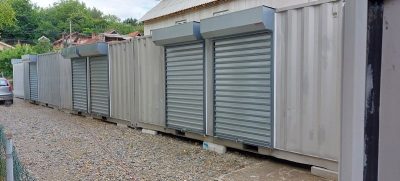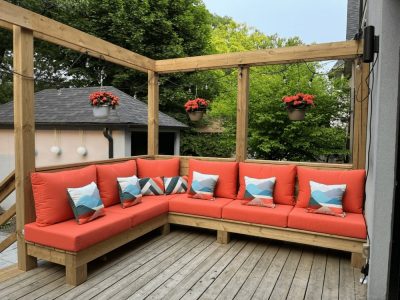You’ve spent months (or years) designing your dream space. The hardwood floors are custom-milled. The paint colors are just right. The lighting hits the marble in the kitchen like a magazine shoot. But while everything looks perfect, there’s a good chance you’ve missed something. Not in your decor—but underneath it.
Hidden areas like crawl spaces, insulation, wall voids, and even your ductwork can turn into unexpected hotspots for pests. Rodents don’t care if your floors are reclaimed oak. Termites won’t hesitate to chew through your mid-century beams. That’s why no matter how polished your home is on the surface, a pest plan isn’t optional—it’s essential.
This is where services like Spark Pest Control become part of the long-term design conversation. Not as an afterthought, but as a quiet layer of protection built into the bones of the house—right alongside your HVAC and smart security system.

Aesthetic Meets Exposure: Where Beauty Becomes Vulnerability
Let’s start with an uncomfortable truth: the more detailed and high-end a home is, the more places there are for pests to hide.
- Exposed beams? Great for wood-boring beetles.
- Insulated basements? Perfect nesting zones for rodents.
- Radiant heating systems? Cozy for both you and insects.
Gorgeous homes often use organic materials—wood, wool, stone—that pests love. Combine that with intricate trim, built-ins, and hidden alcoves, and you’ve got a recipe for invisible infestations.
It’s not about how clean you are or how new the house is. It’s about what pests see: warmth, moisture, shelter, and food (even if it’s just the cellulose in your drywall).
The Usual Suspects (And Where They’re Probably Hiding)
You don’t have to live in a cabin in the woods to have pest issues. Even city dwellers in newly constructed homes can deal with invasions. Here’s where trouble typically starts:
1. Crawl Spaces and Subfloors
Dark. Damp. Undisturbed. Crawl spaces are a pest playground. Mice and rats love the quiet. Termites and ants love the wood. If insulation is loose or moisture-prone, it makes things worse.
2. Attic Insulation
Attics are often forgotten until the roof leaks—but they’re warm, undisturbed zones that attract rodents, wasps, and even bats. If you’re storing seasonal decor or old furniture up there, even better—for them.
3. Wall Cavities
If you’ve ever wondered how pests “suddenly appear,” it’s usually because they’ve been in the walls for a while. Electrical wiring, HVAC ducting, and plumbing create highways inside your home.
4. Floor Voids and Under-Cabinet Areas
These are easy to miss during design but often left open or unsealed. A slight crack under toe kicks or behind cabinetry can become a highway for ants or cockroaches.
What a Proactive Pest Plan Actually Looks Like
Most people treat pest control like plumbing: they call when something breaks. But much like a plumbing leak, an infestation usually starts small and invisible. By the time you notice it, damage is already done.
Here’s what a proactive plan includes:
Scheduled Inspections
You don’t have to wait for signs of damage. Seasonal inspections (usually 2–4 times per year) catch problems before they escalate.
Exclusion Tactics
This is the pest control equivalent of weatherproofing. It includes sealing cracks, reinforcing crawl space barriers, and adding mesh to vents—tiny changes that block major entry points.
Monitoring and Prevention
Strategic placement of monitors (not just traps) helps detect early signs of activity—think of it like a pest “security system.”
Non-Invasive Treatments
Modern pest control uses targeted solutions that avoid harsh chemicals, making it safe for homes with pets, kids, and fancy finishes.
Why It Belongs in the Design Conversation
If you’re working with an architect or interior designer, pest control probably didn’t make the vision board. But it should.
Custom builds and renovations are the perfect time to bake in preventative strategies:
- During framing: Request sealed subfloors and insect-resistant insulation.
- In landscaping: Choose pest-repellent plants or gravel borders to reduce ant and tick habitats.
- With cabinetry: Add concealed seals under cabinets and appliances to reduce access points.
- For HVAC design: Ensure no ducting leaves open access from attics or basements to the main living space.
A pest-free home isn’t just cleaner—it’s structurally sounder. And much cheaper to maintain.
Real Talk: The Cost of Doing Nothing
Let’s put this into perspective.
- Termite repairs can cost $3,000–$8,000—or more if structural wood is involved.
- Rodent damage includes chewed wires, destroyed insulation, and possible fire hazards.
- Carpenter ants can hollow out beams silently for years.
- Cockroaches contribute to asthma in children and ruin the hygiene rating of even the most spotless kitchen.
And here’s the kicker: these issues often aren’t covered by standard home insurance.
In other words, not having a pest plan is like skipping car maintenance because the paint looks shiny.
What Designers (and Homeowners) Should Ask Themselves
To keep pest control integrated—not just reactive—here are a few questions worth bringing up before your next project:
- Are we sealing off all entry points in crawl spaces, vents, and soffits?
- Is the insulation pest-resistant (or at least difficult for rodents to shred)?
- Are materials being stored safely during renovation, or are we inviting mice with those tarps and woodpiles?
- Should we consult with a pest control company before we build that deck, pantry, or pergola?
These conversations don’t take long, but they save time, money, and headaches down the line.

Pest Prevention Is the New Home Luxury
We spend a lot of time obsessing over finishes, layouts, and furniture placement—but very little on what’s going on behind the drywall. The truth is, luxury isn’t just about how a home looks. It’s about how it holds up.
A proactive pest plan isn’t glamorous. But neither is a termite-riddled subfloor.
If you’re investing in your forever home, protect it accordingly. Because under those polished floors and perfect paint jobs, critters don’t care how expensive your backsplash is. They’re just looking for an entry point.
Block them out before they even try.








